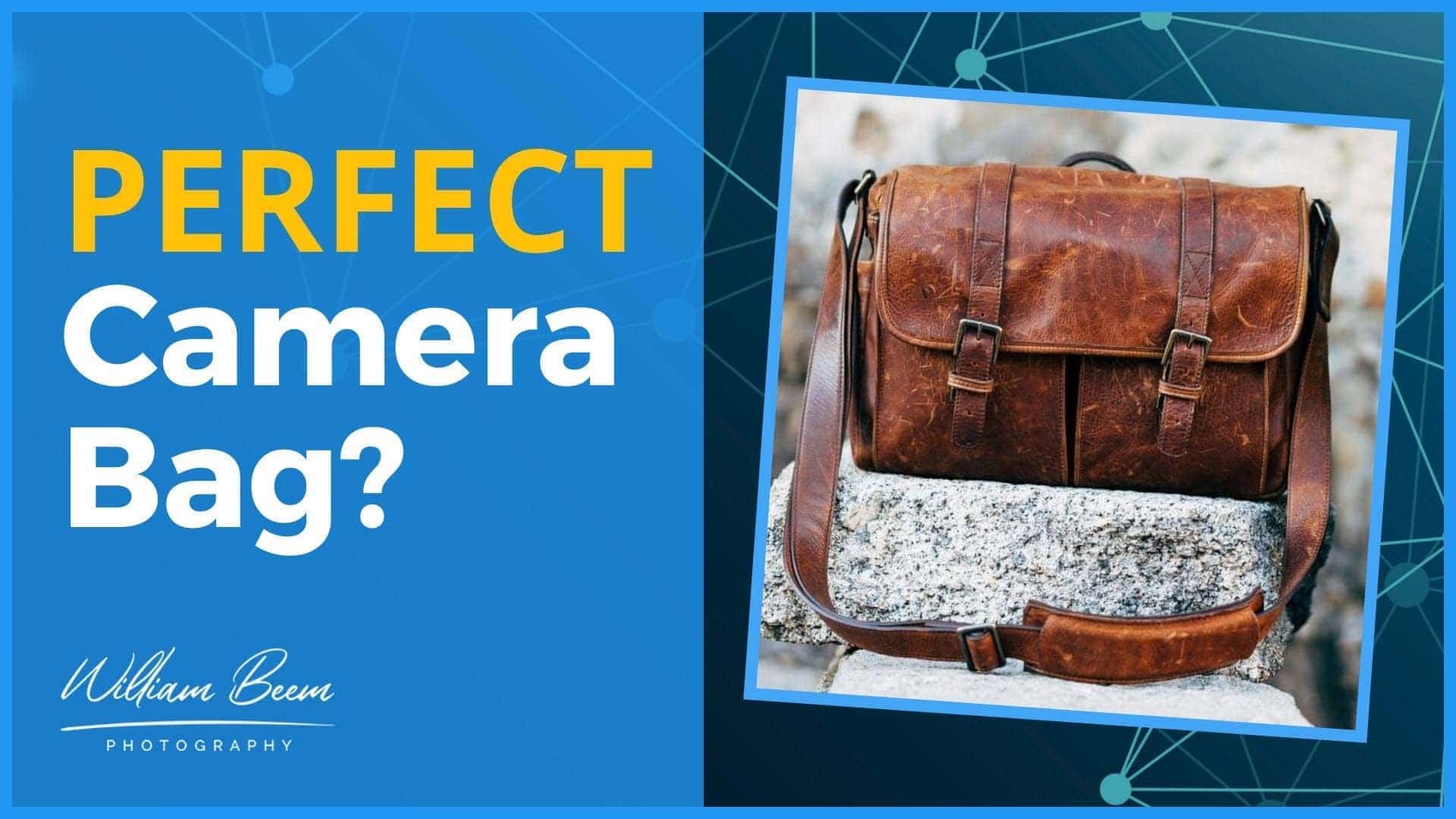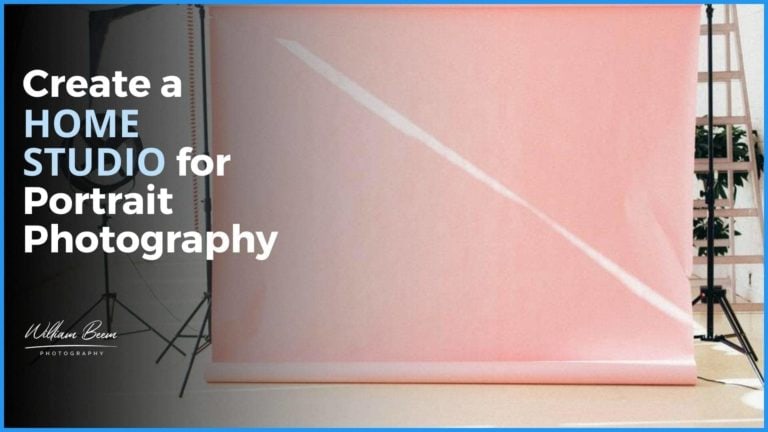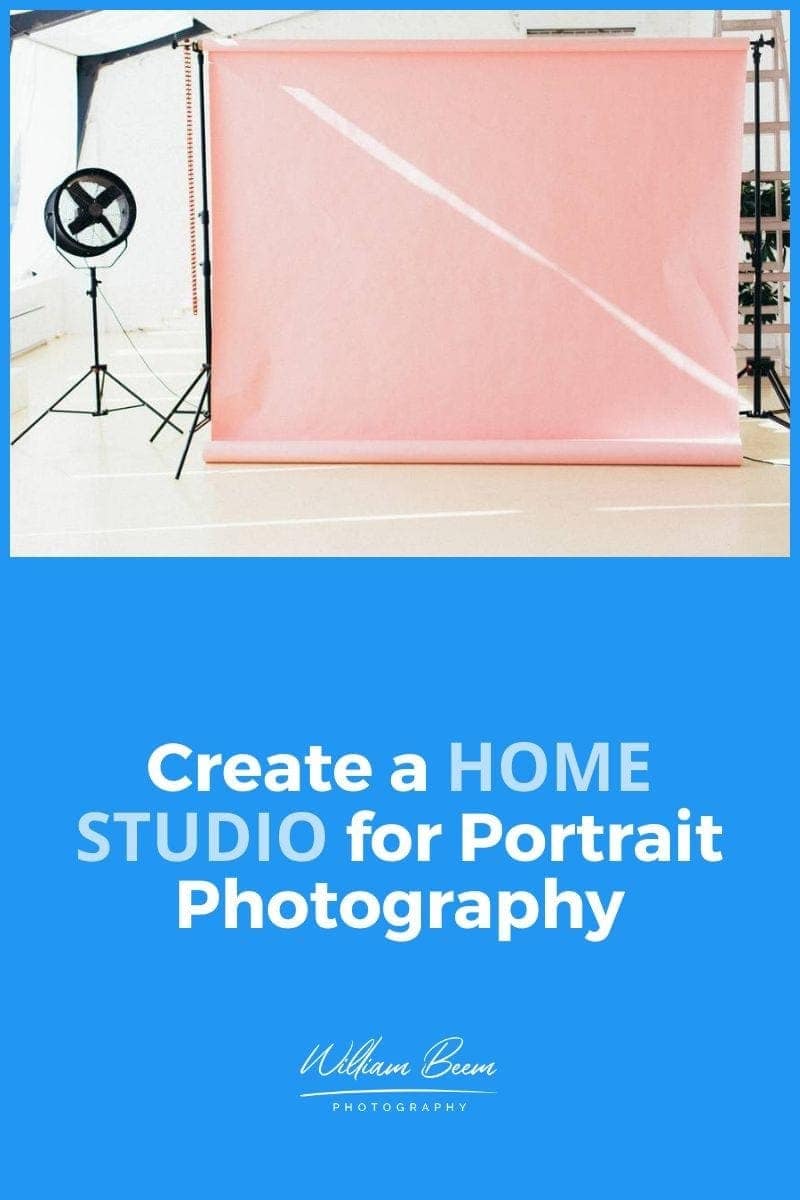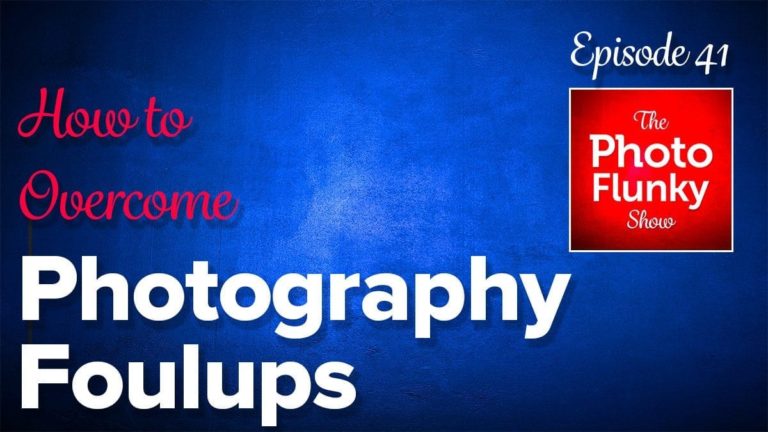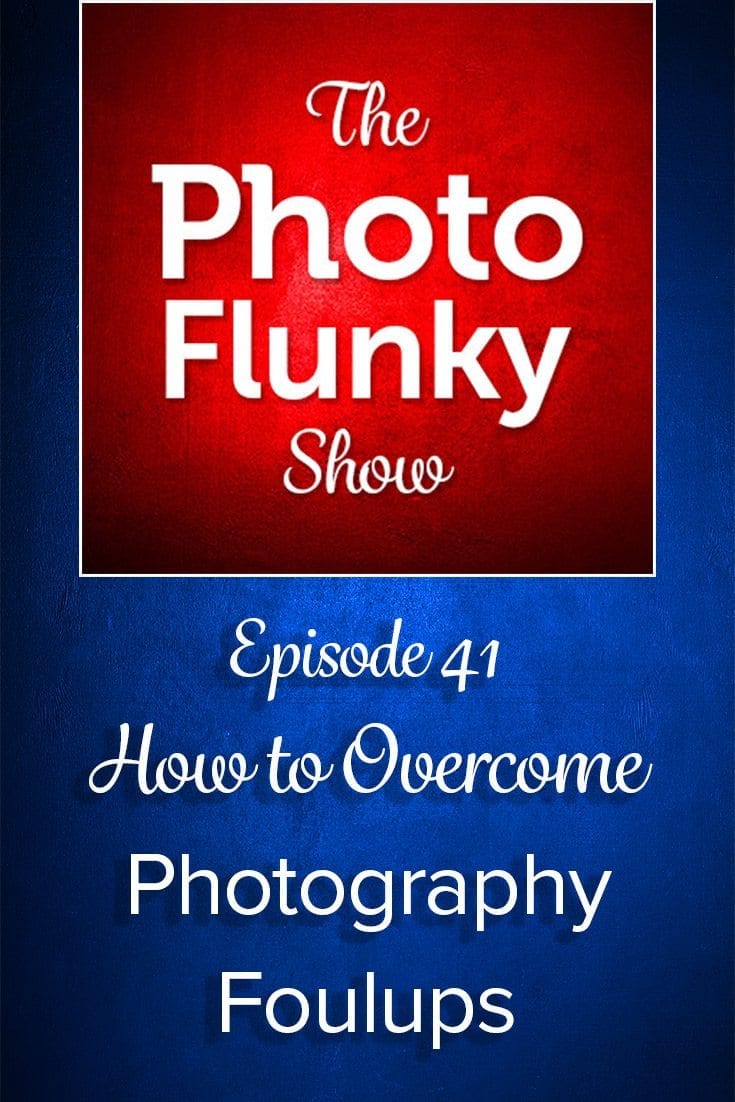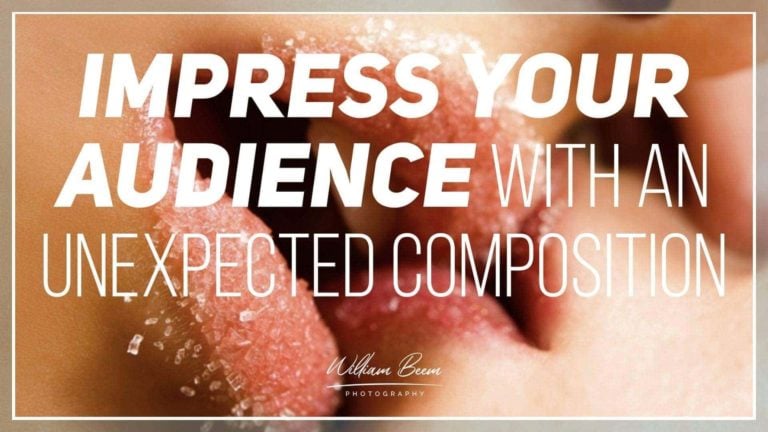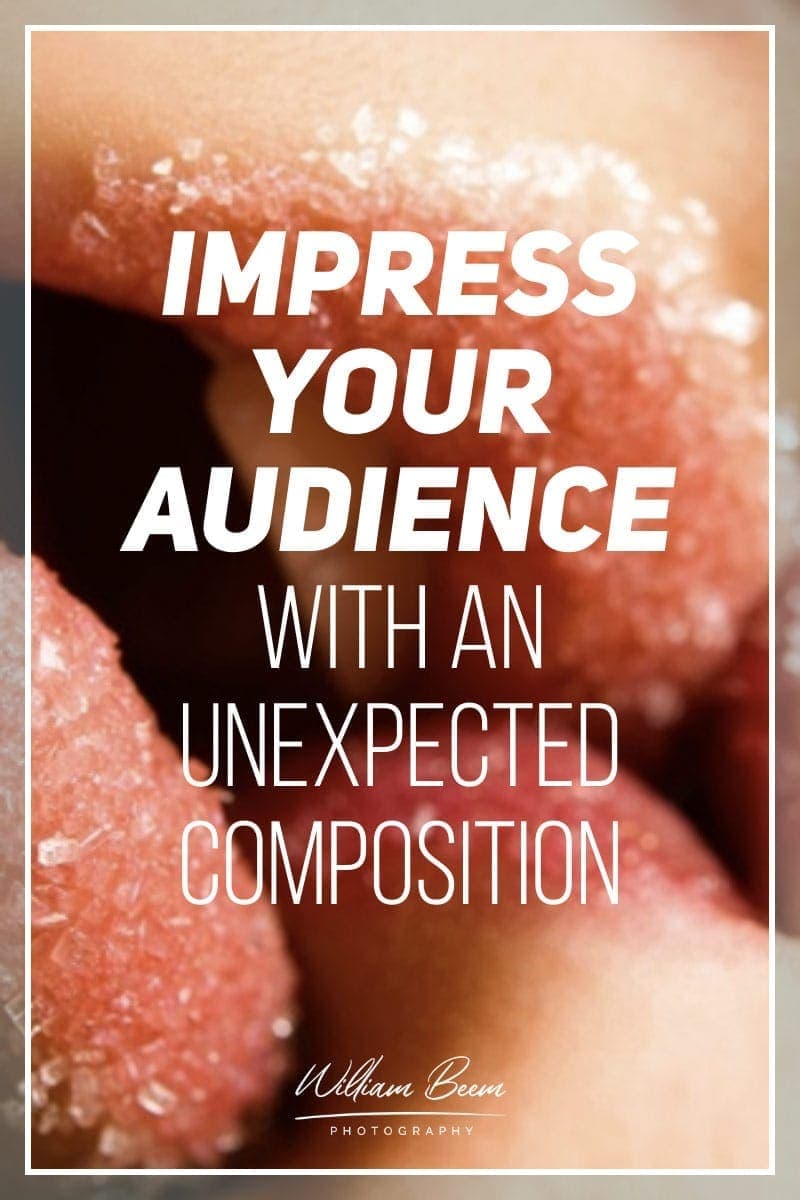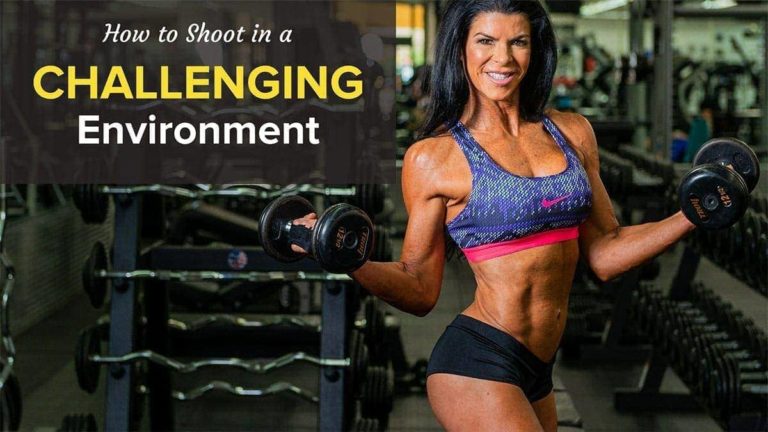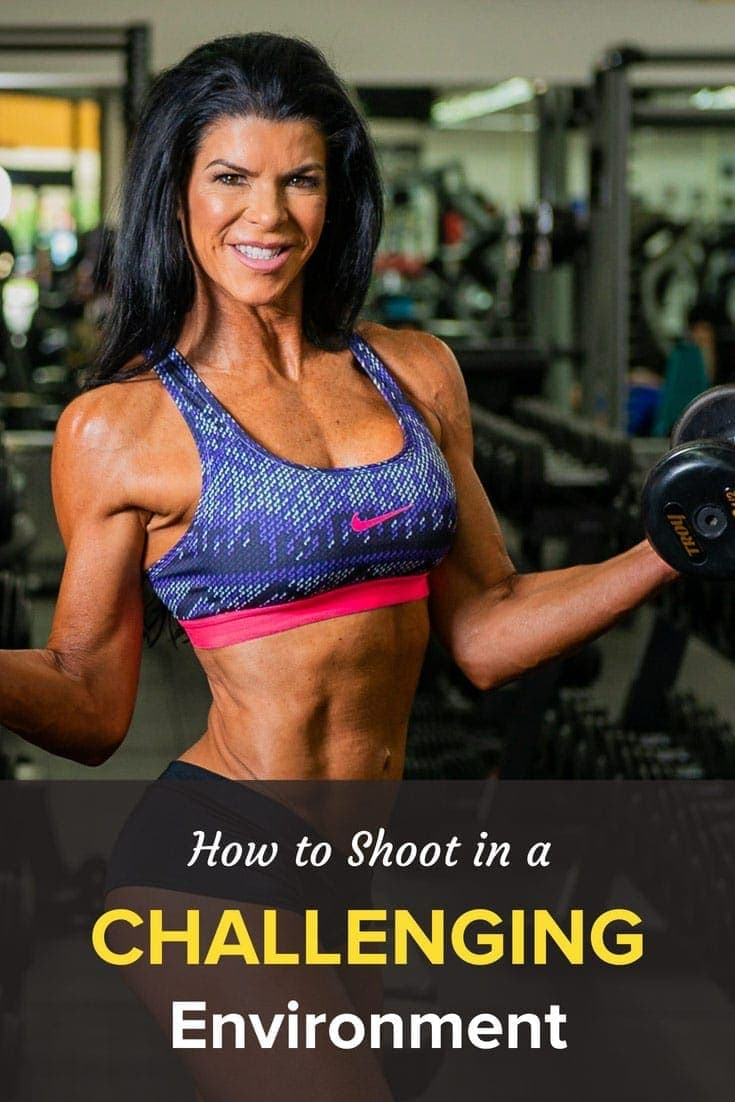Affiliate Disclosure: We earn a commission if you purchase through one of our links at no additional cost to you.
Need help choosing the perfect camera bag? There are several ways to find “your version” of the right camera bag, and I’ve done both.
The first way is to buy all the bags. The good news is that you find out what you like and dislike. The bad news is that it wastes a lot of money and takes up a ton of closet space. Trust me; I can see all my old camera bags from where I type this. There are so many that the closet door won’t close.
The second way to find the perfect camera bag is to have a checklist. We’ll discuss the factors you need to evaluate for your next camera bag purchase to get the best one.
Our Checklist to Find the Perfect Camera Bag
Before we get started, I want to clarify a few things.
First, there is no such thing as a “one size fits all” perfect camera bag. Different bags do different jobs. The camera bag I want to roll through the airport is not the same bag that I want to carry like a backpack.
You may need more than one bag.
Second, what’s good for me isn’t necessarily good for you. We have different needs and different gear, and we’re probably different-sized people. I bought one camera backpack that I liked on paper but felt was too small. I gave it to my wife and then bought the larger version of the same backpack.
With those disclaimers, let’s get on with our ten factors for choosing the perfect camera bag.
1: Make Sure the Interior is Sturdy
The thing that makes a perfect camera bag is its internal structure. It must be sturdy enough to keep your gear in place yet pliable enough to allow reconfiguration.
I’m a fan of camera bags that allow you to move the partitions around, as my needs may change from one outing to another.
Some camera bags have internal dividers or pockets sewn in place, meaning you can’t move them. While you may think this could add to it being sturdy, that’s not always the case.
Some of my camera bags have sewn partitions made out of flimsy nylon and are not up to the job of keeping my gear from rattling around. After some use, poorly made partitions will fray and split. That means your camera, lenses, and accessories aren’t adequately protected.
I don’t think adjustable partitions attached with Velcro are necessarily less sturdy or effective. I have some Think Tank bags where the Velcro partitions are well entrenched and a pain in the neck to move.
That’s OK because that sturdy velcro means my gear stays in place.
2: Think About the Weight of the Bag
Sturdy doesn’t mean it has to be heavy. Some cheaper camera bag manufacturers cut corners by using heavy materials. When you’re carrying or lugging a heavy camera bag filled with heavy gear inside, you’ll wish you spent more for something that didn’t weigh quite as much.
Price vs. weight vs. sturdiness is a bit of a cantilever compromise. Pick the two most important factors to you and accept the consequences.
Think Tank bags are sturdy but may be heavier than I’d like to carry. I use that brand primarily for rolling bags. That’s not to say that they don’t make some good carrying bags, but that Think Tank is my preferred choice among rolling bags.
I’ve had many carrying bags of different styles:
I think Peak Design does the best compromise of being lightweight, sturdy, and configurable. It’s not the best of any of those categories, yet it’s a well-thought-out camera bag that makes the features fit together very well.
Of course, it’s not an inexpensive bag. My wife loves her Tamrac camera bag. It’s lightweight, just the right size, and she has no desire to buy anything else.
Is the Peak Design Everyday Backpack the perfect camera bag? No, but I do like it. One of my complaints is about misleading marketing. When you buy their 20-liter bag, it’s only 12 liters as it ships. To get the 20-liter capacity, you must open the top cover to the last latch. That causes buckling on the top, letting the rain inside, or causing your gear to fall out.
Consider the factors and buy the right camera bag for you.
3: Make Sure the Straps Won’t Slip Off Your Shoulders
Do you like soft, silky material?
I do, but not for my camera bag straps. That kind of material is as slippery as unicorn snot. The frustration you get when the straps don’t grip your shoulders is repeated many times.
Ultimately, you’ll stop using a bag if the straps can’t stay put on your shoulders.
A few things are going on here.
Look for a camera bag with grippy straps but nothing that cuts into your body.
You may have to try several bags to know which strap material works best. Think of it as kissing a few frogs to find your Prince.
4: Sling Bags Aren’t for Everyone
I mentioned a few different types of camera bags earlier in the article.
Of all the types, the Sling bag is likely the most controversial. Some love them. Some hate them.
I love my Think Tank Sling-O-Matic! It’s very near to the perfect camera bag for me.
They don’t make them anymore, probably because many other photographers prefer backpacks to Sling bags. Fortunately, Think Tank has a new series of sling bags.
What makes a camera bag a Sling bag?
Part of it is because it has a single, cross-body strap. Then again, so does a messenger bag. At least you can wear a messenger across your body.
The thing that makes it a Sling bag is the ability to quickly and easily move it from your back (where you typically carry it) to your front for easy access to your gear. In the case of my Sling-O-Matic, it also provided a nice platform to hold up my elbows so I could stabilize for a photo.
You can sling a messenger bag from your back to front, but then you have that flap in the way. A true Sling bag is easier to access than a messenger bag.
Also, it’s meant to wear on your back. The cross-body strap is also protective. You can wear a messenger or even a backpack on one shoulder, making it a tempting target for a running thief.
This doesn’t happen with a Sling bag. They must pull me along for the ride if they grab the bag while I’m wearing it.
One downside to a Sling bag is that the weight goes on a single shoulder. You may need to adjust it to hang on your other shoulder if you’re out for a long period and need a break.
5: Don’t Get a Bigger Bag Than You Need
Size matters. Think like Goldilocks.
You don’t want a camera bag that’s too small or too big. You want a perfect camera bag that’s just right.
At least it’s just right for your intended needs. That’s why I have larger rolling bags, backpacks, and some just for a fun walkabout day. Can you imagine if I were to lug a rolling bag through a city, dealing with broken sidewalks, curbs, bumps, and people tripping over it because they didn’t see it?
Get the right-sized bag for your needs. If you just want something to hold a lens or two and store your camera while you’re having lunch, don’t get a 45-liter backpack. The perfect camera bag changes depending upon your current situation.
The right size for your bag may depend upon your size. The 20-liter Peak Design EveryDay Backpack is nice, but it’s too small for me. So I gave it to my wife and bought the 30-liter for myself.
6: Make Sure Your Bag Has the Pockets You Need
Living in Florida, winter is my favorite season. It’s not snowing here, but it’s cold enough that I get to put on a coat. Why does that matter to me?
Pockets!
Over my years on this planet, I’ve realized that all we want (besides love) is a place to put our stuff. We’re happier when that place to put our stuff keeps it separate from our other cool stuff.
Just as we want partitions to keep our cameras, lenses, and drones from bumping into each other, we want other dedicated pockets.
Pockets for papers. Pockets for iPad. We must have pockets for our memory cards and a place to put our sunglasses. Not only do I want pockets, but I want a pocket with a tether and a hook to hold my keys in place.
I want different pockets, so my passport or wallet doesn’t fly out when I’m digging around for my notepad.
Pockets are the organization tool that binds the universe in a neatly organized container. So make sure your perfect camera bag has the right pockets for your needs.
7: Branded Bags Attract Thieves
If you ever see one of those cool camera bags with a big and colorful Nikon logo, do you wonder what’s inside?
Most people expect there’s some form of expensive camera gear inside. It may also have a target on the side and a loudspeaker telling everyone to steal this bag. That’s the perfect camera bag for thieves.
Not everyone is a thief, of course.
Some people are just plain nosy. They want to know what you’ve got in there. Maybe they’re interested in photography because their nephew has a camera, and you seem nice to start chatting about the differences between a Sony mirrorless camera and a Nikon DSLR.
That’s not as bad as someone who knows nothing about cameras and wants you to tell them how to take professional wedding photos with their smartphone.
The only people who aren’t attracted by a branded camera bag are those photographers who don’t want any part of the crowd it attracts.
8: Get a Water-Resistant Bag
Perhaps this one happens because we live in Florida and also because Lee lived in Scotland. Both places are notorious for rain. Lee has a cute story about a father trying to get his little girl to go, and she didn’t want to leave because it was raining.
He said,
You’re Scottish. You’re going to get wet!
If you’re outside in weather that looks great one moment and starts pouring rain the next, welcome to Florida. Also, get a bag that’s water-resistant or showerproof.
Notice that I said water-resistant, not waterproof. You don’t need armor. You just need something that repels the water long enough to get out of the rain or put on a poncho or protective cover.
Timbuk2 has some weatherproof messenger bags and also sell a camera insert that I like. Peak Design is also weather-resistant, as long as the bag remains closed. You can stuff too much gear into the Everyday Backpack to the point that it opens up, and the water goes inside.
Think Tank also has some great water-resistant gear to protect your camera, too.
9: Get Outside Pockets for Water Bottles or Tripods
Not every bag has exterior pockets, but you should consider getting a bag that has one on each side.
If you need to carry a drink, you don’t want to put it inside your bag. Partly because that’s inconvenient, the other part is because it’s potentially messy. If something spills inside your bag, it may end your photography. At the very least, it’s a frustrating mess to clean.
Exterior pockets aren’t just for water bottles. You can also use them for juice! They make a nice place to attach a tripod to your bag. Put two legs inside and tie the tripod’s top to the upper part of your bag.
Remember that time we talked about a water-resistant bag? These pockets are a good place to put a rain cover or a poncho.
So why do you want an exterior pocket on each side?
One side is for your drink. Depending upon your dominant hand, you may want to reach a drink on your preferred side easily.
Even if you don’t carry a drink or a tripod, it’s nice to have a couple of separate places to stuff something non-critical. Besides, two pockets are symmetrical, and science tells us symmetry is attractive.
Otherwise, you have an unbalanced and unattractive camera bag.
10: A Rubber Base Helps
Finally, consider the bottom of your bag. That’s the place that takes the most abuse. It gets the most scuffs.
If you have fabric and drag your bag around, you risk fraying the material. That weakens the structural integrity. Another issue is putting your camera bag on a damp surface.
With a rubber bottom, you can just wipe it dry. With fabric, the puddle may penetrate and remain damp. Electronics and lenses don’t like dampness. They like dark, dry places.
Also, do you know what’s in that puddle or damp spot under your bag? What if it smells bad? You definitely want a sturdy, flexible surface that you can easily wipe clean and dry, and know that it’s protecting the most vulnerable part of your perfect camera bag.
Time Stamps
Unless you do all your photography at home, you're going to need a camera bag. That's why for this episode, we came up with 10 factors to choose the perfect camera bag. I'm William Beem. Welcome to I Like Your Picture. The show that helps you improve your photography with visual storytelling. What is visual storytelling? It's a method of approaching your photography with a knowledge of who you're trying to serve with your photos and what emotion you want to make them feel.
We encourage you to concentrate on your subject, light and background to create a photo your audience loves. I'm glad you found us. Hi, my name is William Beem and I don't know the name of the guy outside with a leaf blower, but he's really just irking me. As I said, in this episode, we want to talk about how to choose the perfect camera bag.
Lee came up with this one, so she's got 10 things. Then I think it really does make a good set of criteria to choose one. Because when I think about some of the bags I've got, there are times when I get things all excited about one particular aspect, maybe two. And then I find out later on, it's like, Oh,
but it doesn't have this or it doesn't do that. So having a little bit of a checklist like this, I think is a good idea. Lee, you can take a bow now. I will take a bow also because you didn't have this checklist. That's why you have a closet full of camera bags. It really is, I mean, I've got different types,
but also I have different types because I didn't really know what I needed on my checklist. So I had to experiment with a lot of things, But that also changes because your photography habits change. I know you a gear changes, but your gear changes because your habits change. And that means the requirements to carry stuff around changes as well. And I'll be honest with you.
If you're going to be someone who's moving from one location to another, you're probably still going to need more than one camera bag and we'll point those spots out as we go along, but let's start off with Lee's Number one. The first thing I want is for it to be sturdy inside. Now, I've also bought several camera bags, nothing near as many as William's bought.
And that was kind of in my first, probably year of knowing that I was going to go out with my camera and I needed something to carry my DSLR and a couple of spare lenses in it. One of the problems I had with some of the initial ones that I bought was the little partitions were kind of floppy. So when I put stuff in it,
like the camera would be in there and then have the lens, a lens stacked above it or to the side of it. And these little things would kind of flip flop around and it's not like they scratched anything because there was material between them. But I just kind of felt like things were jiggling around in the bag. And that really irritated me. Were those partitions sewn inside or were they Velcro partitions?
Velcro partitions, but they still, they were really, really thin. Like, you know, you've got the Velcro to secure it, but the actual, like the wall of the material that separates one side from the other was a little more floppy than what I would have liked. And I think that depends upon which bag you get. Obviously, these are criteria we want you to look at.
I recently got some new ThinkTank bags, not necessarily for photography. These are called the freeway long haul or long haul freeway, whatever it is. They have some Velcro partitions. When those things stick, they stay. It's just like super strong Velcro is it's the, probably the strongest type of Velcro that I've ever had yet. And when you put them in there,
the dividers or partitions have a good thickness or width to them. But that Velcro, when it gets down on the material, it works. I mean, it locks it in place. I had a hard time pulling it apart the first time. And that was annoying because I put it in the wrong place. Once you've decided where things go, you stick with it pretty much.
For the most part, I do. Now, one of the things I like about my Peak Design bag is it also has those little Velcro partitions. Basically the Peak Design bag is nothing but an empty shell. Then you put in these partitions and you can flip up or flip down different parts of it. So you can make a little pocket for a small lens,
or you could completely flip it open to make room for long lens. It takes more than two partitions length. And I think it does a good job of staying in place. It doesn't do. It's not as strong, I should say as the ThinkTank stuff, but it does a very good job. Now I have some other bags where the partitions are sewn in and some of them do very well.
I've got a camera insert for Timbuk2 messenger bags in that one sewn in. They're very thick and padded and they're not moving around. Other ones I've seen, there's kind of like this nylon material almost. And they just don't hold up. I'm also when they're sewn in, you're restricted to a certain size. So perhaps when you buy the bag, you say,
okay, I've got this camera, body and this lens on it, but then you happen to go out somewhere and spend a weekend shooting where you've got a telephoto lens and all of a sudden, every time you want to put the camera away, you have to take the lens off. And to me, that is a Royal pain in the rear. Yeah.
I think that's why the partitions actually do make good sense, but you need something, like you said, it's going to be sturdy. And also I'd say flexible enough that you can re-configure. Yeah, go ahead with your number two. This is important to me. I don't want it to be too heavy. You know, that weight increases when you're walking around.
And typically if you go out with a camera, you want something to walk around with. I'm not talking about just transporting something from the car to carry your gear to wherever you take photos. If you're on the move or on vacation. This things weighing down on you and you know how weight increases with every step you take. You pick something up and you think it's not heavy,
or you go, Oh yes, it's nice and solid. And you know, I go back to my first point, which is, it needs to be sturdy inside. Sturdy does not necessarily mean heavy. In fact, I kind of learned over time that it should not mean heavy for me. If I'm out for 12, 14 hours with something on my back,
10 pounds is nothing to walk around with for a couple of hours. 12 hours later, that feels like a ton of bricks. It's kind of like carrying a child. Yeah. That too. Especially if you have that as well. I think not too heavy. Again, it depends upon your need. So for example, I have rolling bags that maybe I take on a trip.
So for example, my ThinkTank bags, again, that are on wheels, some of them are on two wheels. Some over on four wheels is heavier, but because it's on wheels, does it make a difference? I thought, well, actually it turns out it does. The ones on four wheels, if I'm going through an airport, that glides right along,
if it's on two wheels and I got to lug it, it was never a problem before I experienced a bag with four wheels. Now that I have, and I have to a bag that I've got to lean over and lug it's like, man, this thing's like, you know, rolling bricks. And that's not necessarily something that you're going to walk around with.
Even though I've got, one's got backpack straps, I'll never use those backpack straps because that's too heavy. I'd say for a rolling bag or something that you're transporting on an airplane, or maybe going with a lot of gear to another studio. It definitely matters with a weight when you're going through an airport, because they've got a weight limit on how much your roller board luggage can weigh.
I think. They don't usually weigh it. It's just, you've got to be sure that it fits in the overhead compartments. Now for another type of bag, if it's going to be a backpack or a shoulder strap or a Sling or something like that, again, if you're going to be walking around with that weight, you don't think so much when you first get it.
But after a while, if it weighs a couple of pounds that just adds up. It does. But also what people don't think about is when you start out, maybe you've just got the camera and a sweater and, you know, wallet and some keys and a couple of lenses in there depending where you are and what you're doing. Sometimes when you come back,
you've stuffed extra stuff in there that you've either collected on the way, or maybe it's gotten warmer and you've taken some, you know, some of your top layers off and stuck them in there, or the kids have given you something to put in there. That weight sometimes literally increases as well as the perception. Yeah. And to tie this back with the first point,
not too heavy, doesn't mean that it's not sturdy. There are materials that are very sturdy and durable that are not heavy. Lightweights. Yeah. And you can find cheaper bags that are sturdy, but then they're made of heavier materials. So you kind of have a trade off between price and weight. Yeah. I love the camera bag. I have, I've had it since probably 2011,
2012. I love it. I have no intention of buying another one. It's the perfect size. It's nice and lightweight. And I didn't pay a fortune for it, but also did not get something like the cheapest, non known brand that I could. Okay. Number three, non-slip material on the straps. Essentially tell me why this is essential. I cannot tand straps that slip and slide. Men tend to wear t-shirts or button down shirts or polo shirts or something.
You know, your shirts on guys. Don't worry about stuff gaping or sliding off their shoulders. I do. That feeling of something sliding gives me that instinctive reaction of my sleeve is sliding off my shoulder or my shirt's like hanging open. I don't feel secure with a bag that slips. It just makes me feel uncomfortable. And I feel like I need to twist in a
weird position to try and support it with one hand. I kind of understand that because I don't have the same problem that you were talking about. Like, if it's pulling your clothes off or, you know, exposing something. I've got a lot of expensive camera gear in the bag. And if the bag starts slipping off my shoulders or I can't hang on to it,
then it's going to allow gravity to take over and drop and possibly damage or break something inside. That's not a good thing. Number four, this one surprised me. Number four. It that's about the Sling bags. Love him or hate him. I like Sling bags. I have a messenger bag that I wear as a Sling bag. All my purses,
there are other little mini backpack style or they little purses. They've got a long strap. And I like to wear mine. I like my Sling bag across the body, because that way I don't have to hold something. I'm lazy with carrying stuff. I love Sling bags. What I learned is that I absolutely cannot stand Sling bags for cameras, for camera bags.
I hate them. All right. The first thing, and I know some people love them, you know, that's great. What I found with Sling bags is that first of all, the weight is always on one shoulder. So you constantly like moving things from side to side and you know, a camera and a couple of lenses starts to get heavy after a few hours.
The other thing with a Sling bag is that it was always kind of pulling. When I leaned forward, the weight of the bag would pull forward and then the strap wasn't slipping off my shoulder, but it was literally gripping onto the material of my shirts and pulling the shirt down forward as well. So now I'm trying to grab and make sure I'm not flashing
somebody. Kind of swings around as well. What I didn't like is that it's kind of hanging on my side. And when I lean, you know, if you have something that's heavy in there, that weight starts to swing it all over the place. I just don't feel like I'm in control of a Sling bag when I've got a camera and camera gear in there.
See, I love Sling bags and I have one that's going to start sounding like a commercial for ThinkTank, but it is a ThinkTank Sling bag. It was called Sling O Matic. They no longer make them, but I'm glad that I got mine. They came in like three different sizes. You're right. It puts all the weight on one shoulder. One of the things I liked about it is the strap up by the top where it would at the top of the bag was very wide and then it would kind of taper down.
So you distributed that weight on a more broader part of your shoulder. So it didn't feel quite as bad as if you were just carrying a backpack on your shoulder. And the nice part about it is you could just sling it around in front of you and then unzip the top of it and reach in and get what you want. You know, pull one lens out,
put another one back in, zip it up and then Sling it back over. Also, it made a very good platform to put your elbows. So if you want to try and stabilize your camera a little bit, it was perfect for that. I don't think it sold very well, which is probably why they don't make it anymore. Not everybody wants a Sling bag.
And like you said, after a while, even with that broad strap, you get tired of it on one shoulder. So they were very smart. They made it so you can take it off, put it down and to move the strap. You didn't have to unhook anything. It just slides right over. And then you put it on the other shoulder.
So it is one of my favorite camera bags. I understand that it's not for everybody, but I'm on the love them side. Well, yeah. And a lot of people are and generally when it's not for camera gear, I do love Sling bags, but you also wear yours over one shoulder. You don't wear it across the body. Sling bags do go across the body.
But you typically don't carry yours though. Backpacks, I don't. Because backpacks straps aren't really meant to go across the body. This Sling bag definitely goes across the body, which in my mind is also a security thing. No, one's going to come up and grab that bag and pull it without pulling me along with it. Why I use my personal, which it's one of the reasons I like Sling bags outside of camera things. I just found,
I bought two Sling bags. Initially. I think there were the first two camera bags I tried. They just didn't work for me. And I couldn't understand why, because I always wear some thing, you know, my purse or a bag or something across the body for the same reason you've just said. It's more secure. I like that. It's kind of hooked on to me.
I think the weight and the size as well makes it different. I don't carry a big purse. You know, I'm kind of little to nothing. And usually just whatever fits into a pocket comes with me. And on this ThinkTank, Sling O Matic that I'm talking about it attached on opposite sides. So you had to wear it across your body in the strap was kind of designed with a little bit of a curve to go over your body.
So the top strap, let's say, if it was on my right shoulder would be on that side and then it would connect to the left side of the bottom. It was something you wore across your body. And it was very, very comfortable. But after a while, you're right, you do want to switch it over. They made it very easy to switch over.
And also because some people are left-handed, some people are right-handed. You need to think if you're going to get a Sling bag, does it fit the way that you want to use your dominant hand? Yeah, that's also true. All right. Number five is no bigger than necessary. And that's one of the reasons why I think you probably may need more than one bag.
Yeah, for me, my walkabout bag, I treated it like a treat my purse. I wanted to fit everything. I need to go in there and nothing more. This is probably different for you. But as a woman, as a mom, the person with the purse ends up becoming the pack mule. When you're on a day out, Hey,
can you just drop this in your bag? You got space in your bag. It's just one small thing, every time. After a few hours, you're like, what can I take out of here of mine to fit out so that everybody else's stuff doesn't fall out. And I learned it's like not getting a big car if don't want to give people rides all over the place.
It's the same with the bag. I like the bag to be compact. I don't really care for carrying bulk. Like I said, I'm lazy about carrying things, but I prefer something a little more compact. All I need to fit in is what I have. Also, it's amazing how careful you are about what you take. You think more carefully about what you take with you when you have limited space.
Yeah. Because you don't want to lug things around this. Like, okay. Yeah. It's better to have it not needed that sort of mentality. But what happens is some of these lenses start weighing. And if you're just going out for like a day trip or maybe a travel thing, I don't want to take a full load of photography gear for just some travel photos.
I want to start being a bit more conscious of the weight that I'm going to be carrying because when you're traveling, you probably are going to be doing a lot of walking. Let's go back to that backpack that I talked about when I have the everyday backpack from Peak Design. I bought two of those. The first one, I decided it was too small for me.
And I gave that to you. The second one fits me much better. And if I'm going to be carrying more gear, it works better. But if I'm going to have a day out, I don't want stuff rattling around. I don't want a bunch of empty space in the bag. That space becomes room for your contents to start sloshing around and,
and moving. And that's distracting to say the least. It's uncomfortable. Sometimes when you've got extra room in your bag, it makes you the kind of like the pack mule. Like you were talking about number six, you have additional pockets. Yeah. I absolutely have to have additional pockets now. Not too many because I found that more isn't necessarily better, but I want to be able to put my keys,
my wallet, slide my phone in somewhere. Preferably not where my keys, my wallet goes. So I went at least two separate little pockets that I can close. And the reason for this is I don't want to be pulling something out. And you know, you don't notice that you flip your keys out or you flip your wallet or your card off or some cash or something like that.
So I like to be able to separate things that I'm not going to dig in and out of every five minutes. I like pockets, but a lot of them need to have a particular purpose. So there are going to be some pockets for memory cards or maybe my card holder kind of case that I have. I want to have a pocket for papers. If I'm traveling,
I want a place to put a ticket. You know, some people still get paper tickets, I think, yeah. I don't want to give my phone to some stranger, but there are also pockets. Like I like to have a pen with me and it's nice to have those little loops or whatever. You can just stick a pen or two inside of it.
And sometimes you don't know what you're going to take. Maybe you've got receipts that you need to keep. And none of these pockets are big. If you want to get bigger, then, yeah. There might be a pocket for a laptop. It might be a pocket for an iPad. And I like camera bags that have this little strap that comes out with a hook and you can put your keys on that.
And then it goes in its own little pocket. So pockets. Yes. And also pockets with a purpose. Yes, my camera backpack. I think there's actually like a little, it's like a tiny little pouch that actually clips onto one of the straps. It's got a zipper on it and you can stick your memory cards in there. So they right on the underside of my camera strap and its own little padded pockets. I'll give Peak Design
another thing that I like. At the top of theirs, there's a little zipper you can pull open in the pocket, right there. It's perfect for throwing my glasses. Since I wear glasses and I'm going to have sunglasses going back and forth as they have a case, I need a place to put that. So that's nice to be able to put it in there and zip it shut.
And also some external pockets are nice every once in a while to shove something in. But my glasses, I kind of want to be protected. Yeah. All right. This was one of my favorites. Number seven, branding bad. You, you termed it that way. Branding bad. I look at people walk around, like they look like a walking advertisement for Canon or Nikon or,
you know, whatever camera they they're using it. I thought, why didn't you just let everybody know what's in your bags. They can come and steal it. Although I don't have a camera, like a camera brand bag. For people who are into photography. My bag is a it's a tam, it's a Tamrac? Tamrac or yeah, you don't have a LowePro anymore.
So Tamrac is, is the one that I've got. I didn't know if I was remembering the name correctly. I don't pay attention. Like if you're into photography and you know anything about camera bags and things like that, you're going to look at my bag and you'll eventually realize that there's camera stuff in there, but I don't really care to go walking around advertising that there's a camera in there. Now that said, I don't take any other steps to try and be discreet about it.
Because typically if I'm walking around somewhere and I've taken my camera with me, my camera is in my hand. I like to wear it across the body on its strap. And I hold the body in my hand. And as far as I'm concerned, if I'm going off, I carry the camera. That's why I need the bag. I need the bag to put the camera in
when I'm sitting down to eat or not take pictures. You know, I draw a line about what I'm going to advertise. As far as what's in the bag. It's not just photography. I used to work for PWC. And when I first started there, they gave me my laptop and they gave me a really nice bag. And I was looking at it and the colors were nice,
but I said, Hey, how come it doesn't have the PWC logo on it? And they said, because people steal stuff that says PWC, and it's true. You know, it's an accounting firm, it's an auditing firm. And that means that you have a lot of information. You go up to a coffee shop and you put your bag down and it says,
PWC, people say, I wonder what's on that. And it's the same thing. If you have Nikon, Sony, Canon, whatever, emblazoned on your bag, or even some of the better known camera bag, brand names. My ThinkTank bags, if you know what a ThinkTank is, you know, what's, what's in it. But the average consumer probably just sees another black Cordura bag or whatever,
going down the airport and may not think too much of it. So branding. Yeah. Branding is bad. This is another one. I like the name, but I'm going to let Lee describe it. Shower proof is nice. That's number eight. Well, I'll say it's nice because it's not essential. I mean, as far as a waterproof bag,
I think you can buy these waterproof camera bags. You got to pay for them. And most likely they're going to be heavy and bulky because they're designed for rugged, specific purposes. I've, I'm guessing. I don't even know. The material in my bag is showerproof and basically all what it is oif sudden cloudburst starts to, like Florida that happens in the summer or most of the year.
I just want it to buy me time without the water getting through into the contents that I can get under shelter or throw something over the bag. Typically I just carry a cheap poncho with me and if necessary, I'll throw it over me with a backpack on and over the, which will go over the top of the backpack and me as, as one unit.
And that's usually how I get around it. Some bags actually come with a rain cover. I've got a backpack. It's not necessarily a camera backpack, but it's got this kind of nylon thing with, it's almost like a shower cap for your bag and it just kind of stretches around it. So if you get into a rain storm, it keeps the water off.
And That's awesome. So that would count to me as showerproof. But that means you've also got to carry that in your bag and have it with you when the shower starts. Stop, put the thing on and then put the bag on and go. So it's different than something like the Everyday Backpack from Peak Design, which I've seen tests where they pour water on it.
And it's water resistant enough, except if you pack it full of stuff. And then the top kind of opens up a little bit and then there's a direct line to getting in. So if you're like, if you have a sweater or something, you put it in the bag and then it can't collapse the top all the way. If part of it still opens up and is no longer waterproof. It's then a cup.
Most of these bags, even the cheaper ones, the material will buy you some time. The problem you have is the zippers, because that's just usually some kind of porous material, you know, on either side of the zipper runner and that's where the water gets in. So That's why I liked the idea of the shower cap. It's covering the zippers.
It's covering the bag. Everything's covered up. And the water just kind of runs right off. It may be an extra step to pull it out, put it on, but it does a better job, I think. Yeah. Number nine, since we're speaking of water, Lee wants a water bottle holder on the outside. I do because I like to carry a bottle of water or juice or something with me.
And if I'm walking around, I want to be able to put it somewhere and take it out easily without having to open the bag. The other thing is if something spills or the cap's not properly screwed on, or you know, there's any impact to the bottle, I do not want it to leak on the inside. Especially if there's something sticky in there,
like orange juice or something. I prefer to clean up the mess on the outside. So that's why I say I like those little expandable mesh pockets on the outside. Because they don't take up any space. They're not really, they're barely visible. You don't have anything in there, but it gives you somewhere to put something. And some, if you're not using a water bottle,
you can send them stash, other non valuable items that you just want to have with you like a chapstick or whatever. Well, if you've got those external pockets, let's say that you're carrying a tripod. It's often easy to put a couple of legs in the tripod, strap the top up, but for a water. Yeah. It's it's you want it within reach.
You don't wanna have to dig inside your bag to get your water and to if your drink spills, you don't want them to spill inside of your bag. So I think those are really the best reasons. Make sure your bag has a water bottle holder on the outside and check both sides because depending on whether you're left-handed or right-handed, you want to reach where you're comfortable.
See my, my camera bags actually got a mesh pocket on either side. Yeah. So one of the sides is for the water bottle, which I did not put where my dominant hand is. The other one is where I put the, I stick the tripod legs when it's collapsed and also took some fishing tackle and some webbing and actually some Velcro and actually made a little like a clasp that I could have had like secure that top part of the tripod against the bag with it.
And if you're going out on a rainy day, that external pocket is a good place to put your shower cap or your poncho or whatever. All right, we've made it up to number 10. A rubber base helps. This probably sounds really weird and I would never have thought to look for something like that. But it's one of the things that I noticed after probably a couple of years of really hauling my camera bag around.
And I looked underneath and realized the base is like rubber. And it's got these little stoppers and it's really soft. It's not so it's pliable. So it's not a hard thing, but I thought I looked at how scuffed it was. And I thought, you know, if that would be in the material on the bottom, I think it probably would have started to fray and wear through.
And that is right where the business end of the camera storage stuff is. It made me think about it after the fact. I would never have considered looking for it. It's not even that, or not only that I should say. You don't want to set your bag down on something and find out that wherever you set it was damp. And now you've got a soggy bottom. That rubber base you can just wipe right off.
If it's the material, then it's going to get embedded into the material. And who knows if it's going to leak through to your precious equipment inside? Oh yeah. Cause you never know what that wet stuff is. It could be rainwater, Or for if you're at Disney World, you know, let's just say that the monorail smell like band-aids and urine for a reason.
Never trust a puddle at Walt Disney World. And I think we're pretty much going to end it on that note. Yeah. That was our useful tip for the week. So I hope that helps you. And if you have any questions about this or if there's a criteria that you like that we didn't discuss, please let us know in the show notes for this episode.
Where are those show notes you may ask? Well, I'm going to tell you. This is episode 256. So show notes are going to be available at WilliamBeem.com/episode256. And if you've got a comment, please go ahead and leave it there. And while you're on the website, take a look at the courses. We've got some free eBooks to give away.
We've got a free course for Lightroom users, and we've got a couple of rather inexpensive courses for both Lightroom and Luminar AI users. So if that catches your fancy, please stop on by WilliamBeem.com/courses. Thank you so much. We'll see you again next week.

